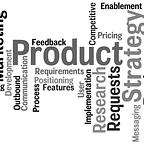Most Important Mertic for Your SaaS (Part 4)— Pricing
The journey of delivering a successful SaaS product involves doing a number of things like keeping CAC and churn low, however, the most important aspect that have lingering impact on the success or failure of the product is Pricing. Yet, pricing activities are largely ignored to the fringes, and any pricing discussion is often taken up only when it can’t be pushed under the carpet anymore. As per a study total time spent on pricing a product is on average 6 hours per release. Which is awfully small amount of time as compared to time spent on developing the business case, business strategy and the product itself.
There could be multiple reasons behind that like numbers are really difficult to master and its natural for people to get uncomfortable, but pricing is the stage from where the rubber hits the road and actually the communication is sent to the market about the inherent value the product is supposed to deliver. While price is a number, but at the same time it’s important to look under-the-hood and define what that number actually refers to, and what pricing page communicates.
On product website the most important page for a customer is the pricing page, and hence it has to be paid special attention. Pricing page conveys three distinct messages about the product, which are:
1. Positioning: Positioning defines the target customer segment that the product targets. It’s important to define it clearly as based on the positioning potential customers can decide if the product would be relevant for them. Further positioning helps in defining the product feature set so that it delivers value to customer. The product positioning should reflect the alignment with the growth of customers, so that it opens up an avenue for revenue increment as customers grow. An example of such positioning is following three positionings:
a. Start-up
b. Medium Size Enterprise
c. Large Enterprise
This kind of positioning can help a customer to relate to product package that is of interest for them. The customers can be at various stages of maturity.
2. Packaging: Defines the features that are offered to a particular product positioning. Packaging can take into account all the features and functionality that a specific product SKU have to offer for respective positioning, but to be effective it has to define the key value metric.
Simply put, the value metric is the key parameter that defines the unit of value that is delivered to customer. For example, for a video editing software it can be number of videos that can be processed under a subscription package.
The more the value metric is closely aligned to how customer perceive value the easy it becomes to make buying decision.
3. Pricing: Price is essentially the dollar number associated to a particular product package. This can be arrived by adopting 3 approaches namely:
a. Cost Plus Approach: This approach as the name suggest derives the cost based upon the cost of building the product and adding margin to that. The pro of this approach is its easiest to implement but the con is that it offers limited upside in terms of margin.
b. Competition Based Approach: Where the pricing is based upon competitive offerings in the market. The pro of this approach is that its easy to implement. The con is limited differentiation and limited margin opportunity. It is useful for highly commoditized offerings.
c. Value based pricing: This is the pricing approach where the value delivered to customers is taken into consideration while defining the price. Though this approach has the potential of maximizing the margin, but the difficult part is discovering the customer value. We will discuss about the approach to arrive at pricing in subsequent posts.
The pricing page has to be simple enough for a customer to make the decision about the product SKU they would need. The more the time a customer has to spend in understanding the pricing, the higher the probability to drop without making the order. Let’s look at Zoom Pricing Page:
The Positioning makes it clear for the customer to look at which SKU would be most relevant for them. The Packaging captures the key value metrics that determines the unit of measurement of value that customer can easily understand, which is number of participants, number of meetings, length of meetings etc. The pricing is highlighted along with any offers or discounts on particular pricing tier, to nudge customers towards a particular pricing tier.
Such pricing takes into account the fact that as the customer grows, the pricing plan also grows and hence the revenue for Zoom. Which is the most important aspect of SaaS pricing.
